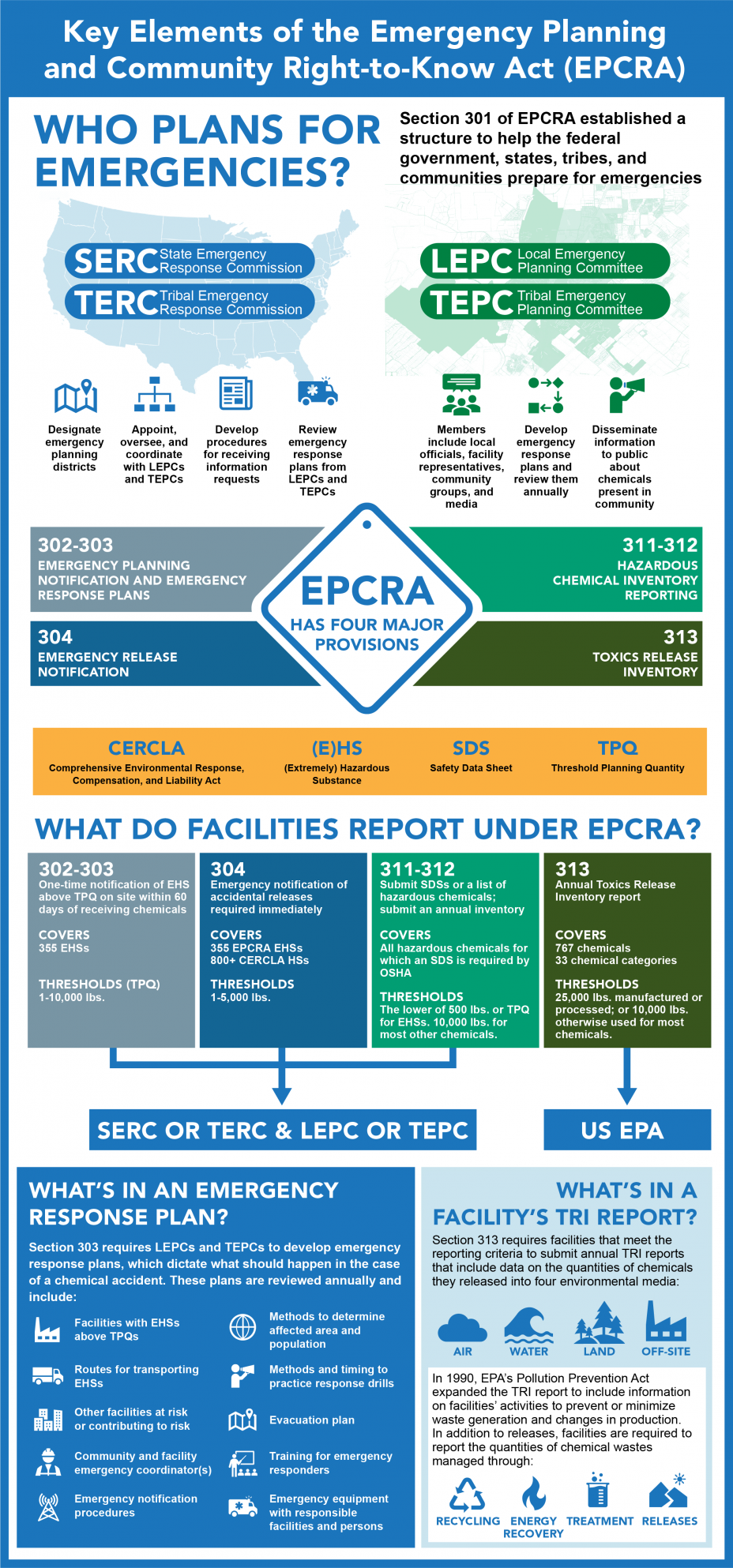More on EPCRA
The TRI was established by the Emergency Planning and Community Right-to-Know Act (EPCRA) in 1986. The creation of EPCRA was in response to what is widely considered to be the worst industrial chemical disaster in history. Beginning on December 2, 1984, methyl isocyanate gas was accidentally released from a chemical plant in Bhopal, India. Thousands of people died that night and many more were injured. Thousands more died later as a result of their exposure, and survivors of the accident continue to suffer with permanent disabilities. Approximately six months later, a similar incident occurred at a facility in West Virginia. These two events raised concern about local preparedness for chemical emergencies and the availability of information on toxic chemicals.
EPCRA establishes requirements for federal, state and local governments, Indian tribes, and industry regarding emergency planning and “Community Right-to-Know” reporting on hazardous and toxic chemicals. These requirements are specified in EPCRA’s four major provisions as shown in the figure below. Information collected under EPCRA helps states and communities develop a broad perspective of chemical hazards for the entire community, as well as for individual facilities. The TRI (also known as EPCRA section 313) contributes to this broader perspective by making information about the management of chemical waste generated at facilities available to the public, further supporting informed decision-making by companies, government agencies, non-governmental organizations, communities, and others.

This page was published in January 2021 and uses the 2019 TRI National Analysis dataset made public in TRI Explorer in October 2020.

